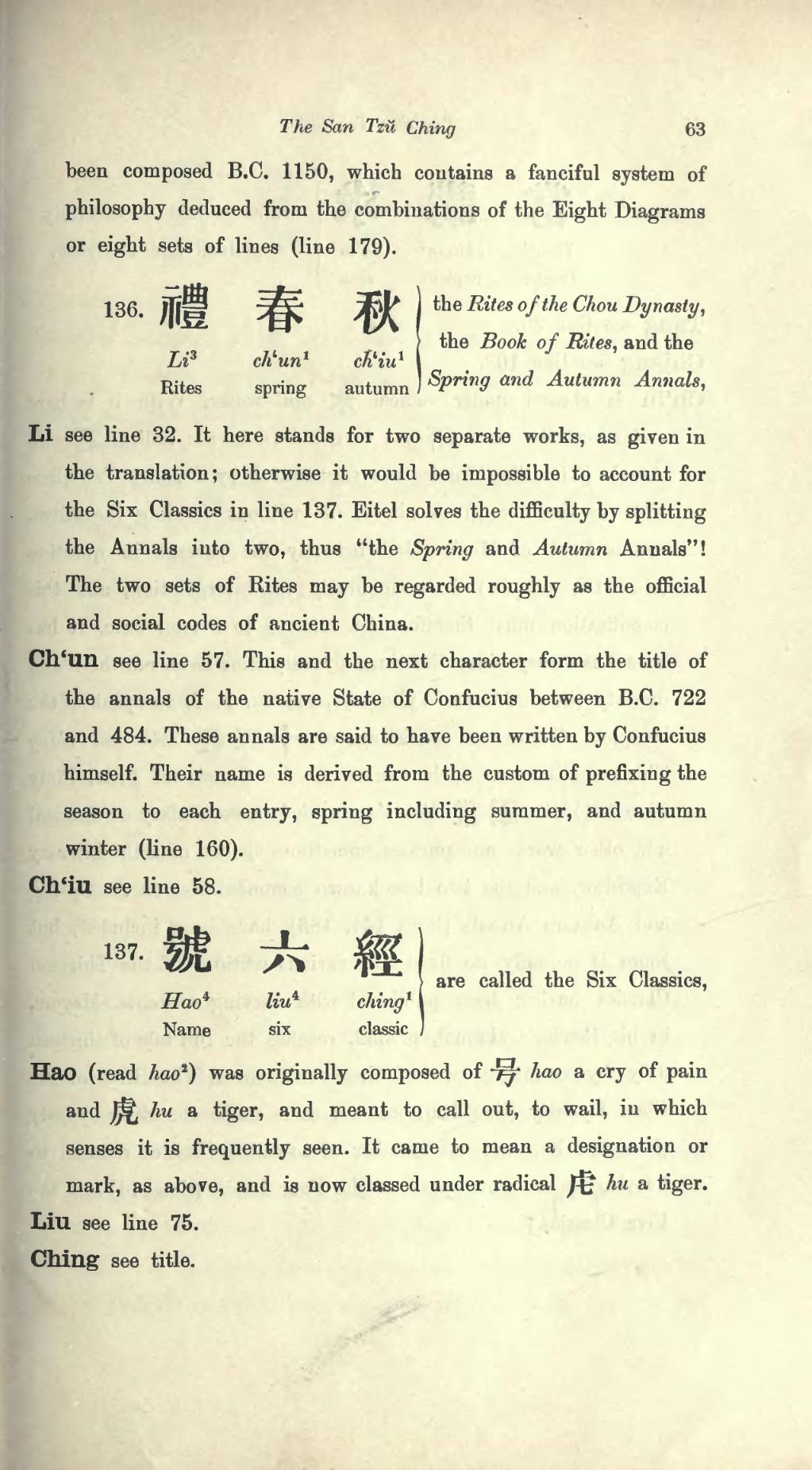been composed B.C. 1150, which contains a fanciful system of philosophy deduced from the combinations of the Eight Diagrams or eight sets of lines (line 179).
| 136. | 禮 | 春 | 秋 | the Rites of the Chou Dynasty, the Book of Rites, and the Spring and Autumn Annals, | |
| Li3 | ch'un1 | ch'iu1 | |||
| Rites | spring | autumn |
Li see line 32. It here stands for two separate works, as given in the translation; otherwise it would be impossible to account for the Six Classics in line 137. Eitel solves the difficulty by splitting the Annals into two, thus "the Spring and Autumn Annals"! The two sets of Rites may be regarded roughly as the official and social codes of ancient China.
Ch'un see line 57. This and the next character form the title of the annals of the native State of Confucius between B.C. 722 and 484. These annals are said to have been written by Confucius himself. Their name is derived from the custom of prefixing the season to each entry, spring including summer, and autumn winter (line 160).
Ch'iu see line 58.
| 137. | 號 | 六 | 經 | are called the Six Classics, | |
| Hao4 | liu4 | ching1 | |||
| Name | six | classic |
Hao (read hao2) was originally composed of 号 hao a cry of pain and 虎 hu a tiger, and meant to call out, to wail, in which senses it is frequently seen. It came to mean a designation or mark, as above, and is now classed under radical 虍 hu a tiger.
Liu see line 75.
Ching see title.

